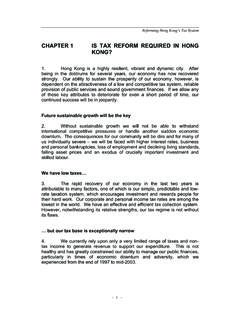Transcription of 1 AGRICULTURE AND RURAL DEVELOPMENT
1 1 agriculture and rural development In order to report efficiently on the objectives outlined in Chapter 3, they have been clustered into logical groupings and structured into , as outlined below and discussed accordingly in the sections that follow: Enhancing food security - Food security and sustainable AGRICULTURE taking account of community-based and indigenous approaches to sustainable food production (Chapter II, 7 (a), (j) Chapter IV, 40 (a), (p) - Early warning systems for monitoring food supply and household supply and demand and household access to food, weather insurance schemes for farmers and AGRICULTURE related disaster management programmes (Chapter II, 7(l)).)
2 - Application of risk-mapping, remote sensing, agro-methodological modelling, integrated multi-disciplinary crop-forecasting techniques, and computerised food supply/ demand analysis Providing a conducive environment for agricultural production and economic returns - Enhancing agricultural productivity and farmer s incomes (Chapter II, 7(k)); - Diversification of agricultural production systems (Chapter IV, 40(l)); - Agrarian reform and measures to secure equitable access to land by both genders (Chapter II, 7(d) Chapter IV, 40(f); - Infrastructure DEVELOPMENT to enhance distribution to markets ((Chapter II, 7(i) Reducing poverty through RURAL DEVELOPMENT - Integrating RURAL DEVELOPMENT strategies into Poverty Reduction Strategies (PRSPs) or other economic/ DEVELOPMENT strategies and the empowerment of local RURAL communities, especially those living in poverty and their organizations(Chapter II, 7c))))
3 , - Supporting main driving forces for economic growth and social DEVELOPMENT in RURAL areas ( AGRICULTURE , small and medium enterprise DEVELOPMENT , employment and other non-agricultural sector) as well as improving access to basic services and infrastructure in RURAL areas ( adequate shelter, education, employment opportunities, health, sanitation, energy) ; Reducing the environmental impact of agricultural production - Programmes to improve soil fertility, environmentally sound agricultural pest control and improvements in water management in AGRICULTURE (Chapter IV, 40(o))
4 Improving access to international agricultural markets - Bilateral, regional and multilateral agreements relating to liberalisation of agricultural product markets with specific focus on support for other African countries to improve regional trade and economic integration between African countries (Chapter VIII, 67(c) & (d)). Enhancing food security Progress The current food security challenge in South Africa consists of two dimensions: the first tries to maintain and increase South Africa's ability to meet its national food requirements, and the second seeks to eliminate inequalities and poverty amongst households that is made apparent by inadequate and unstable food production, lack of purchasing power, poor nutritional status and weak institutional support networks and disaster management systems.
5 Food security is seen as a Constitutional Right in South Africa and guarantees its citizens the right to have access to sufficient food and water, and that the state must by legislation and other measures, within its available resources, avail to progressive realisation of the right to sufficient food. Despite national food security, many South African households experience continued food insecurity and malnutrition and unemployment. According to the most recent data from Statistics South Africa (StatsSA) (for 2004), approximately million South Africans are vulnerable to food insecurity.
6 In response, the Gorvenment of South Africa is implementing the Integrated Food Security Strategy (IFSS) of 2002. The Strategy ensures that food insecure groups in the country: Gain access to agricultural productive resources; Gain access to income and job opportunities to enhance their power to purchase food; Are empowered to eat nutritious and safe food; Have access to state provided relief measures that may be short to medium-term and on a sustained basis, depending on the nature of given interventions particularly where the group is unable to access sufficient food because of disability or extreme destitute conditions.
7 And There is a continuous monitoring and evaluation of food security and nutrition status in the country through the Food Insecurity and Vulnerability Information System Management (FIVISM). The maintenance of timely, accurate and relevant agricultural economic and statistical information enables the production of a monthly Food Security Bulletin which provides an early warning system that enables Government to implement proactive and timely interventions in response to impending food shortages (Please see Box 1).
8 The Government of South Africa s Agricultural Economic Research and Analysis programme provides timely, accurate and relevant agricultural economic and statistical information on a quarterly basis to inform decision making on production by all participants in agricultural sector. Information provided includes, monthly crop forecasts and the quarterly livestock estimates; the quarterly Monitoring Report on the economic performance of the sector; the quarterly Agricultural Economic Review and Forecast Report, the monthly Food Security Bulletin, the quarterly Crops and Markets Report; weekly Price Watch; the annual Africa Economic Review and Outlook, and the Economic Review of South African AGRICULTURE .
9 In order to improve the accuracy of crop estimates, a new producer independent crop estimate system was developed and implemented in four provinces and the preliminary results are promising. Box 1: Agricultural Geo-referenced Information System (AGIS, ). AGIS is the official portal for the dissemination of data for the DoA. The vision of AGIS is: "Making South Africa's Agricultural information available on the Internet". AGIS went live in 1999 and was officially launched at the World Summit on Sustainable DEVELOPMENT in 2002.
10 AGIS contains a large amount of information related to the environment. The Food Insecurity and Vulnerability system assists decision makers to decide how and where to intervene to assist communities that are vulnerable. The Food Insecurity Vulnerability Information Mapping System (FIVIMS) pilot project was completed in the area of Sekhukhune. Infotoons are aimed to assist those who do not have agricultural education to start gardens and grow vegetables. Environmental indicators that are available on AGIS include: - Grazing capacity - Land capability Soils susceptible to wind erosionSoils susceptible to water erosionPotential for soil regeneration if badly eroded.









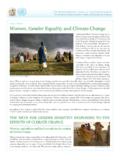
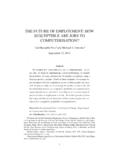

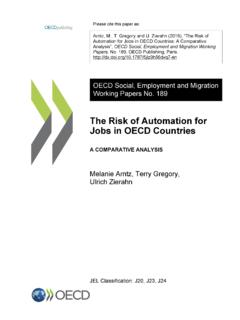

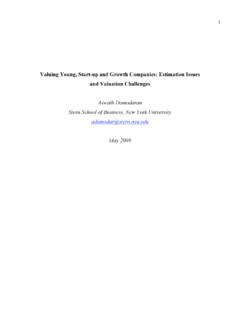
![Capitalism in the age of robots-Final[2] - ineteconomics.org](/cache/preview/a/a/c/6/a/b/c/6/thumb-aac6abc6513ee20e53e35b861f7788a8.jpg)
